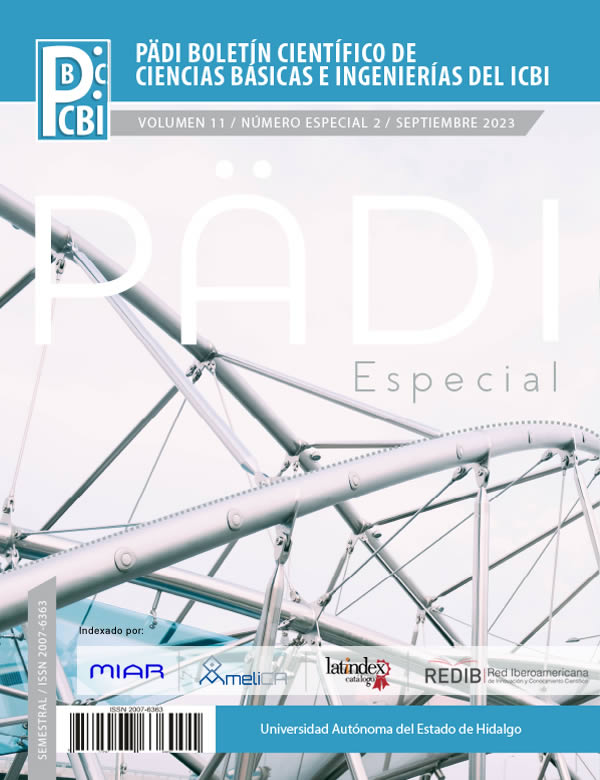Methodology for the construction of pseudo random number generators using genetic programming
Abstract
Pseudo-Random Number Generators (PRNGs) are commonly used in computing to simulate random events in applications such as games, simulations, statistical analysis, and cryptography. This paper presents a methodology to propose PRNGs indirectly, using image coding. The proposed PRNGs are built automatically using genetic programming. The performance of the proposed PRNGs outperforms PRNGs composed of chaotic systems and is validated using the NIST 800-22 Rev. 1a statistical test set, reaching performances above 99.46 %.
Downloads
References
Akhshani, A., Akhavan, A., Mobaraki, A., Lim, S.-C., y Hassan, Z. (2014). Pseudo random number generator based on quantum chaotic map. Communications in Nonlinear Science and Numerical Simulation, 19(1):101–111. Recuperado de https://www.sciencedirect.com/science/article/pii/S1007570413002700?casa_token=ggWyeR_3h4oAAAAA:7FAX5EXyuGMpGBtBvdeWDwHtc0ffxjFBG1Xe69MNCRCRej7Bme4SiMO8fJz-TAzX0z8k0KcAOQo
Bhowmik, A., Karforma, S., Dey, J., y Sarkar, A. (2021). Approximation algorithm and linear congruence: a state-of-art approach in information security issues towards internet of vehicles. Internet of vehicles and its applications in autonomous driving, pp. 149–172. Recuperado de https://link.springer.com/chapter/10.1007/978-3-030-46335-9_10.
Gnatyuk, S., Okhrimenko, T., Azarenko, O., Fesenko, A., y Berdibayev, R. (2020). Experimental study of secure prng for q-trits quantum cryptography protocols. En 2020 IEEE 11th International Conference on Dependable Systems, Services and Technologies (DESSERT), pp. 183–188. IEEE. Recuperado de https://ieeexplore.ieee.org/abstract/document/9125007
Hernandez, J. C., Seznec, A., e Isasi, P. (2004). On the design of state-of-theart pseudorandom number generators by means of genetic programming. En Proceedings of the 2004 Congress on Evolutionary Computation (IEEE Cat. No. 04TH8753), volumen 2, pp. 1510–1516. IEEE. Recuperado de https://ieeexplore.ieee.org/abstract/document/1331075.
James, F. (1990). A review of pseudorandom number generators. Computer physics communications, 60(3):329–344. Recuperado de https://www.sciencedirect.com/science/article/abs/pii/001046559090032V.
Kietzmann, P., Schmidt, T. C., y Wählisch, M. (2021). A guideline on pseudorandom number generation (prng) in the iot. ACM Computing Surveys (CSUR), 54(6):1–38. Recuperado de https://dl.acm.org/doi/abs/10.1145/3453159.
Kösemen, C., Dalkilic¸, G., y Aydin, Ö . (2018). Genetic programming-based pseudorandom number generator for wireless identification and sensing platform. Turkish Journal of Electrical Engineering and Computer Sciences, 26(5):2500–2511. Recuperado de https://journals.tubitak.gov.tr/elektrik/vol26/iss5/28/.
Lamenca-Martinez, C., Hernandez-Castro, J. C., Estevez-Tapiador, J. M., y Ribagorda, A. (2006). Lamar: A new pseudorandom number generator evolved by means of genetic programming. En Parallel Problem Solving from Nature-PPSN IX: 9th International Conference, Reykjavik, Iceland, September 9-13, 2006, Proceedings, pp. 850–859. Springer. Recuperado de https://link.springer.com/chapter/10.1007/11844297_86.
Moreno, M. (2015). Linear congruence generators. Recuperado de https://mmore500.com/resources/december_2_2015.pdf.
Naik, R. B. y Singh, U. (2022). A review on applications of chaotic maps in pseudo-random number generators and encryption. Annals of Data Science, pp. 1–26. Recuperado de https://link.springer.com/article/10.1007/s40745-021-00364-7.
Sathya, K., Premalatha, J., y Rajasekar, V. (2021). Investigation of strength and security of pseudo random number generators. En IOP Conference Series: materials Science and Engineering, volumen 1055, p. 012076. IOP Publishing. Recuperado de https://iopscience.iop.org/article/10.1088/1757-899X/1055/1/012076/meta.
Sayed, W. S. y Radwan, A. G. (2020). Generalized switched synchronization and dependent image encryption using dynamically rotating fractional-order chaotic systems. AEU-International Journal of Electronics and Communications, 123:153268. Recuperado de https://www.sciencedirect.com/science/article/pii/S1434841120306294?casa_token=CDx1VcRk0rIAAAAA:r9ttSFCo8Gj8fKnwUBpD5Y5bWQD5vJiv3dot5CfpJx_K_40Avg_EobGIrHksJH54KZsI8AJp44E.
Senkerik, R., Zelinka, I., y Pluhacek, M. (2017). Chaos-based optimization-a review. J. Adv. Eng. Comput., 1(1):68–79. Recuperado de https://www.researchgate.net/profile/Michal-Pluhacek/publication/324087299_Chaos-Based_Optimization_-_A_Review/links/5ac23a440f7e9bfc045e52fc/Chaos-Based-Optimization-A-Review.pdf.
Si, Y., Liu, H., y Chen, Y. (2022). Constructing a 3d exponential hyperchaotic map with application to prng. International Journal of Bifurcation and Chaos, 32(07):2250095. Recuperado de https://www.worldscientific.com/doi/abs/10.1142/S021812742250095X.
Tornea, O. (2013). Contributions to DNA cryptography: applications to text and image secure transmission. Tesis doctoral, Université Nice Sophia Antipolis; Universitatea tehnica (Cluj-Napoca, Roumanie). Recuperado de https://theses.hal.science/tel-00942608/.
Yuan, S., Jiang, T., y Jing, Z. (2011). Bifurcation and chaos in the tinkerbell map. International Journal of bifurcation and chaos, 21(11):3137–3156. Recuperado de https://www.worldscientific.com/doi/abs/10.1142/S0218127411030581.
Zgliczynski, P. (1997). Computer assisted proof of chaos in the rössler equations and in the hénon map. Nonlinearity, 10(1):243. Recuperado de https://iopscience.iop.org/article/10.1088/0951-7715/10/1/016/meta?casa_token=5vDT7Rx3ItwAAAAA:VDj0JvpcfMuOGJXs15a1ONTzliRjNnJmkIRg5xkZIoGuDyYs4g5Lk63YeB-TJL-rp9JEtCTCMJCw_uK2MtyC.
Copyright (c) 2023 Ismael Rojas-Montes, Ariel Cavazos-Amador, Abraham Flores-Vergara, Eddie Helbert Clemente-Torres

This work is licensed under a Creative Commons Attribution-NonCommercial-NoDerivatives 4.0 International License.













